The Best Julia Child Poached Eggs Recipe for Perfect Brunch
Julia Child’s poached eggs represent a culinary technique that transforms ordinary ingredients into an extraordinary morning delight.
Mastering this method requires precision, patience, and a gentle touch with delicate ingredients.
Home cooks often feel intimidated by poaching, but the process becomes surprisingly straightforward with practiced skill.
Tender egg whites envelop a golden, silky yolk that creates a luxurious texture and rich flavor profile.
Professional chefs recognize this technique as a hallmark of elegant breakfast preparation, elevating simple ingredients into something remarkable.
Subtle nuances in water temperature and vinegar balance can dramatically impact the final result, making each attempt a small culinary adventure.
You’ll appreciate how these eggs can turn an everyday meal into a gourmet experience: prepare to impress yourself and your dining companions.
Savor the Timeless Simplicity of Julia Child Poached Eggs
Key Ingredients for Julia Child Poached Eggs
Egg Ingredient:Liquid Ingredients:A Comprehensive Guide to Julia Child Poached Eggs
Step 1: Prepare the Water Bath
Fill a large pot with 3 inches of water. Heat the water on high until it reaches a boil, then lower the heat to create a gentle simmer. Look for tiny bubbles at the bottom of the pot without breaking the surface.
Step 2: Strain the Egg
Crack the egg into a fine mesh strainer to remove loose, watery egg whites. Gently transfer the strained egg into a small bowl or ramekin.
Step 3: Add Acidic Helper
Pour of white vinegar into the simmering water. The acid helps the egg whites coagulate more quickly and maintain a compact shape.
Step 4: Create a Water Swirl
Use a spoon to stir the water in a circular motion, creating a gentle whirlpool in the center of the pot. This spinning motion helps wrap the egg white around the yolk.
Step 5: Gently Drop the Egg
Carefully slide the egg from the bowl into the center of the whirlpool. The spinning water will help the egg white fold neatly around the yolk.
Step 6: Watch the Cooking Time
Allow the egg to poach for 2.5 to 3 minutes. The egg white should look firm and opaque, while the yolk remains soft and golden.
Step 7: Remove and Drain
Lift the poached egg from the water using a slotted spoon. Place it on a paper towel to absorb any excess water. Serve immediately for the best texture and flavor.
Expert Hints for Julia Child Poached Eggs
Smart Storage Solutions for Julia Child Poached Eggs
Creative Variations for Julia Child Poached Eggs
Closing Reflections on Julia Child Poached Eggs
Julia Child’s poached egg technique transforms breakfast into an elegant culinary art.
Mastering this method reveals kitchen confidence with minimal ingredients.
Water temperature and gentle whirlpool create perfect egg texture.
Precise timing ensures runny golden centers nestled within delicate white clouds.
Professional chefs worldwide respect this classic French technique.
Her approach elevates simple ingredients into memorable morning experiences.
Passionate cooks: explore, savor, share this recipe’s magic – your breakfast adventure awaits delicious discovery.
Print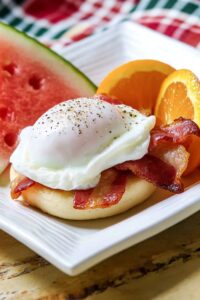
Julia Child Poached Eggs Recipe
- Total Time: 8 minutes
- Yield: 1 1x
Description
Julia Child’s classic French poached eggs bring elegant simplicity to breakfast tables. Her masterful technique creates silky eggs with perfectly runny centers, delivering a luxurious morning experience that elevates your culinary skills with Parisian charm.
Ingredients
Main Ingredients:
- 1 large egg
Liquid Ingredients:
- 1 tablespoon (15 milliliters) white vinegar
Dry Ingredients:
- No dry ingredients in this recipe
Instructions
- Prepare the cooking vessel by filling a generously sized pot with approximately 7.5 centimeters (3 inches) of fresh, cool water, ensuring ample space for the poaching process.
- Elevate the water temperature to a robust boil using high heat, then gracefully reduce to a gentle simmer where tiny bubbles nestle at the pot’s bottom without disrupting the surface.
- Delicately crack the egg into a fine-mesh strainer to eliminate loose, watery egg whites, then transfer the refined egg into a small ceramic ramekin or shallow bowl.
- Introduce a splash of white vinegar (approximately 1 tablespoon or 15 milliliters) into the simmering water, which helps coagulate the egg proteins and create a more compact poached egg.
- Generate a gentle whirlpool by rotating a long-handled spoon in a circular motion through the water’s center, creating a smooth vortex that will help wrap the egg white around the yolk.
- Gently slide the egg from the ramekin directly into the water’s swirling center, allowing the current to naturally envelop and shape the egg.
- Allow the egg to poach undisturbed for approximately 2.5 to 3 minutes, watching for the egg white to transform from translucent to opaque and set while maintaining a luxuriously soft, runny golden yolk.
- Retrieve the poached egg using a perforated spoon, letting excess water drain briefly, then transfer to a layer of absorbent paper towel to remove any remaining moisture before serving.
Notes
- Poaching eggs seems tricky, but mastering a few simple techniques makes it surprisingly easy and rewarding.
- White vinegar acts like magic glue, helping egg whites coagulate beautifully without changing the delicate flavor.
- Gentle water movement creates a perfect vortex that elegantly wraps egg whites around the golden yolk.
- Room temperature eggs perform better than cold ones, spreading more evenly and poaching more consistently.
- Timing matters critically – three minutes delivers a dreamy runny center with perfectly set whites.
- Freshest eggs guarantee the most stunning poached results, with compact whites that stay beautifully together.
- Shallow simmering water prevents aggressive boiling that could tear delicate egg structures apart.
- Strain watery egg whites before poaching to ensure a cleaner, more professional-looking final presentation.
- Using a fine mesh strainer helps remove loose egg whites, creating a neater, more compact poached egg.
- Salt the water after poaching to prevent potential protein breakdown during the cooking process.
- Prep Time: 5 minutes
- Cook Time: 3 minutes
- Category: Breakfast, Snacks
- Method: Poaching
- Cuisine: American
Nutrition
- Serving Size: 1
- Calories: 70 kcal
- Sugar: 0 g
- Sodium: 5 mg
- Fat: 5 g
- Saturated Fat: 1.5 g
- Unsaturated Fat: 3.5 g
- Trans Fat: 0 g
- Carbohydrates: 1 g
- Fiber: 0 g
- Protein: 6 g
- Cholesterol: 186 mg
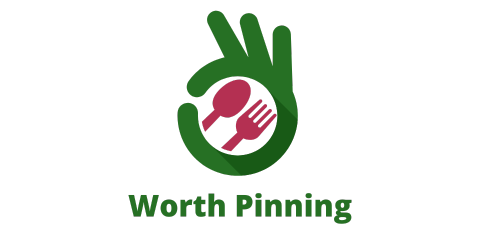
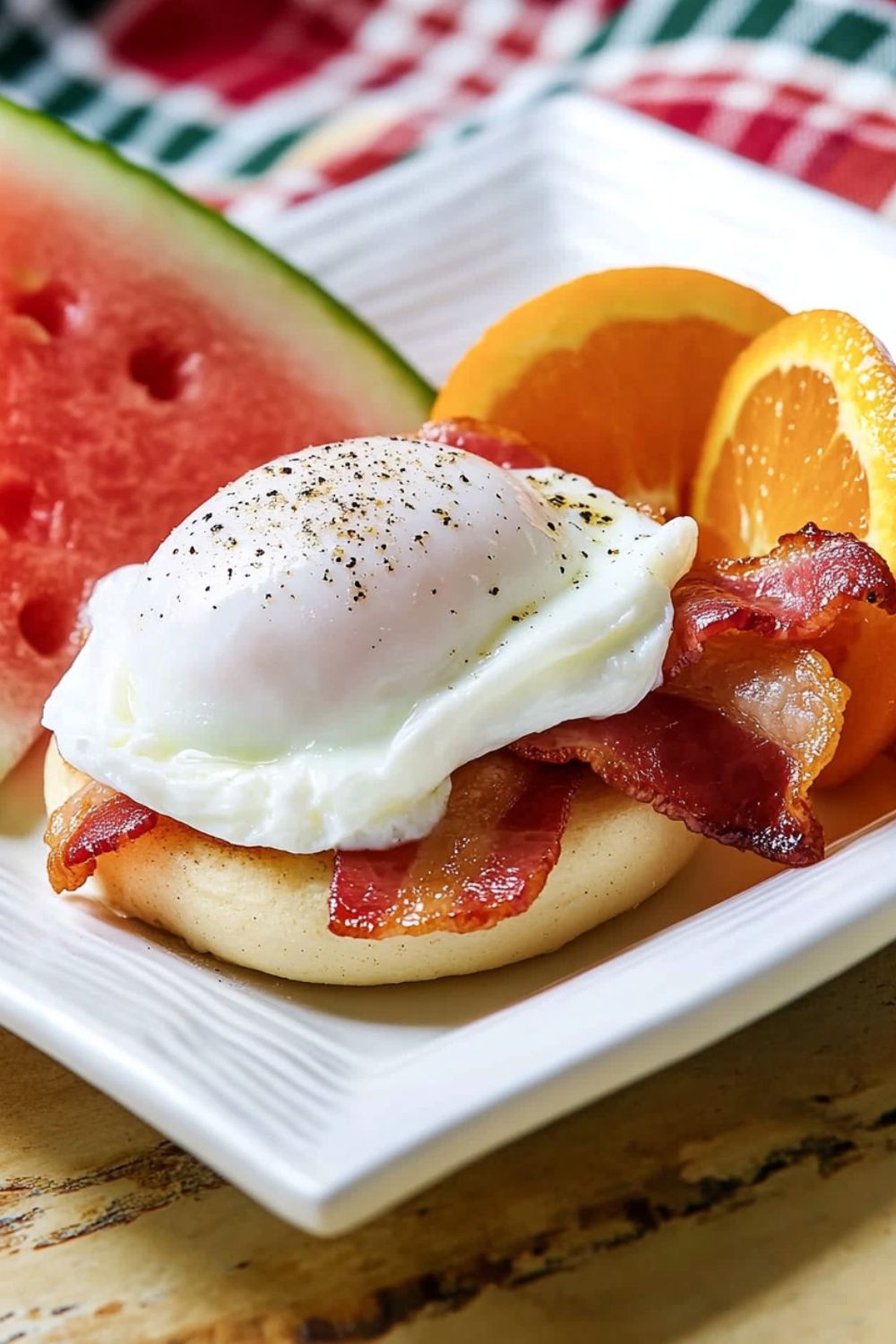
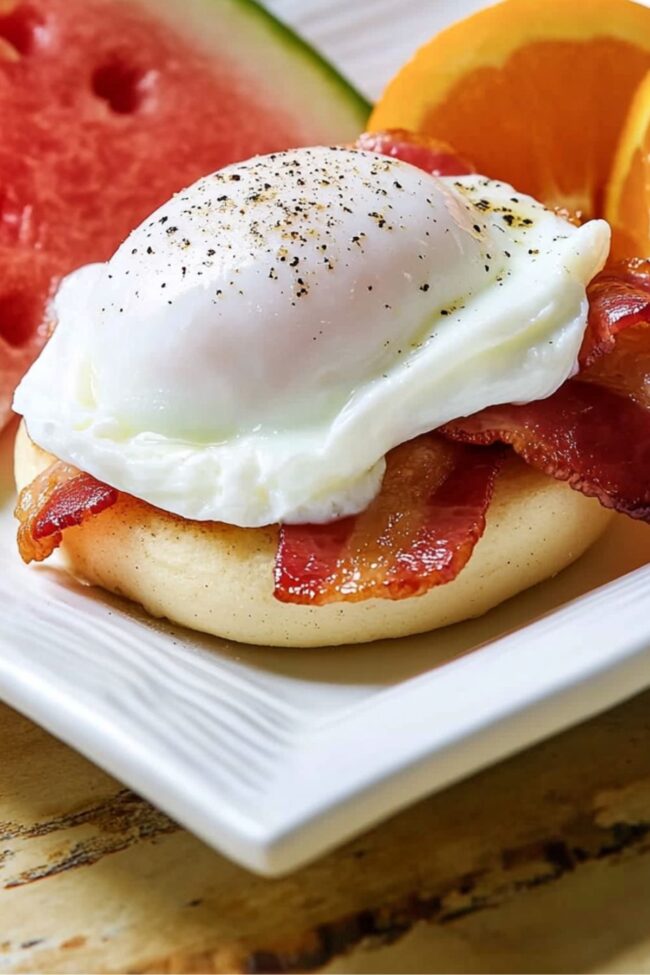
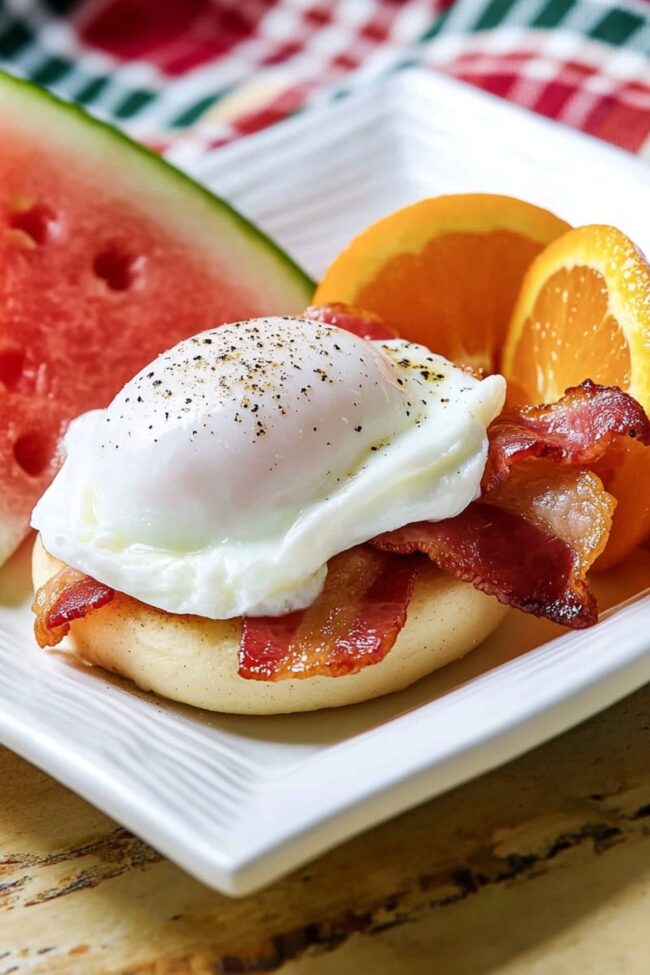
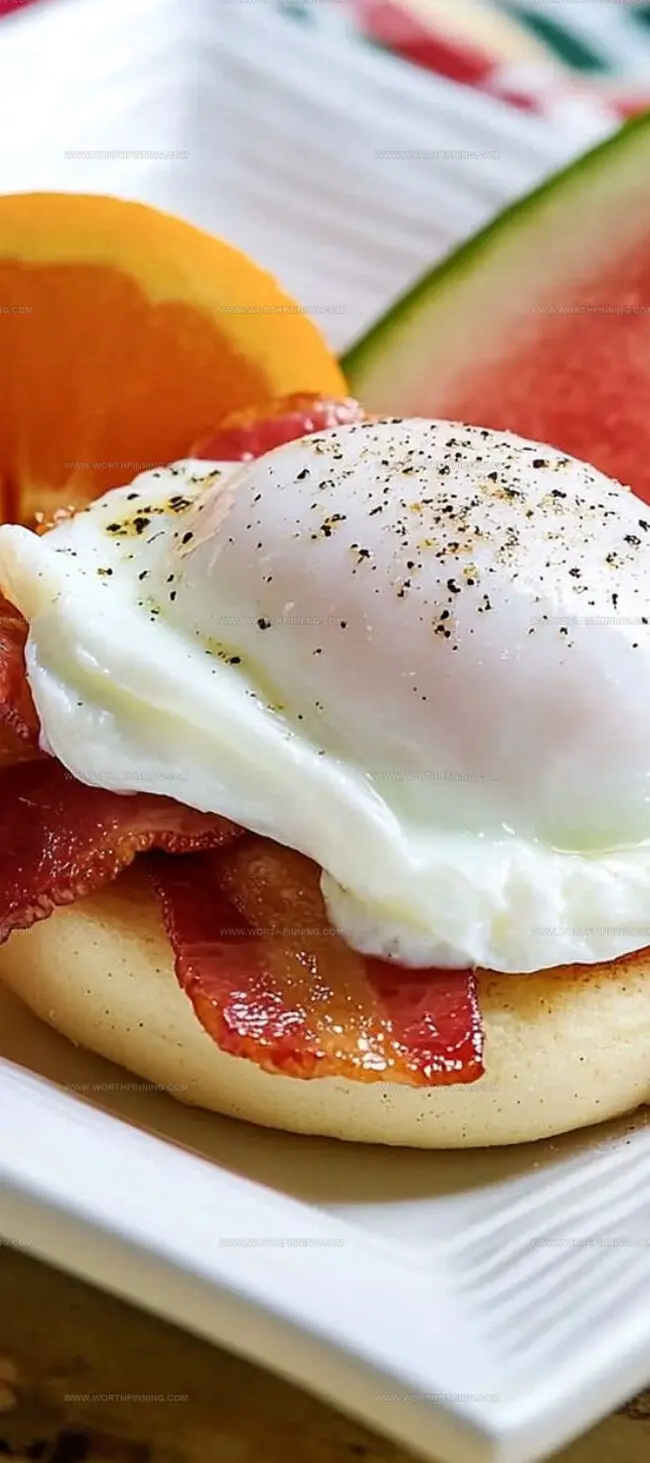
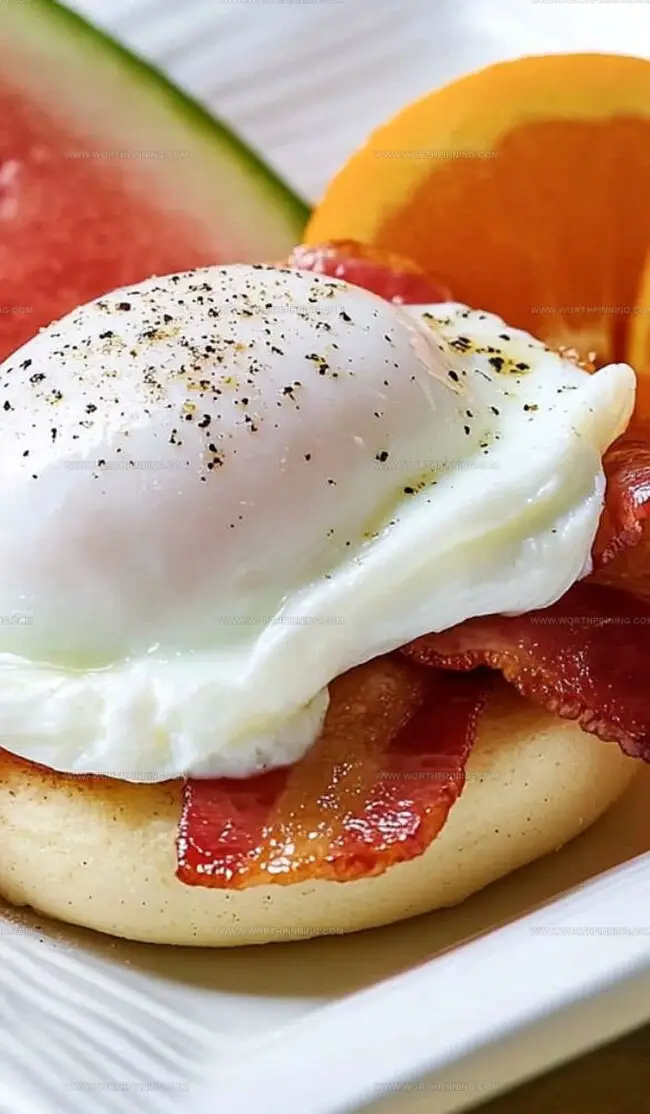
Ethan Miller
Founder & Lead Content Writer
Expertise
Education
Portland Community College
Culinary Institute of the Pacific
Ethan’s culinary journey began in his grandmother’s kitchen, where he first learned to play with flavors and ingredients. With formal training in culinary arts and a deep love for international cuisines, Ethan’s goal is to share the joy of cooking with others.
He believes food is all about creativity and bringing people together, one meal at a time. When he’s not experimenting with new dishes, he enjoys hiking in the Oregon wilderness and discovering fresh, local ingredients.